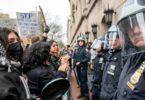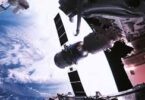Andrey Yashlavsky
The Chinese People’s Liberation Army (PLA) has begun the second phase of its large-scale military exercise that has completely sealed off the island of Taiwan, and has begun using live firing after the first phase of training began on Tuesday night when U.S. House Speaker Nancy Pelosi visited the island, seriously disrupting sovereignty of China.
An unprecedented Chinese military exercise is being held around the island of Taiwan with six major maritime areas and its airspace in the north, northeast, east, south, southwest and northwest from Thursday noon to Sunday noon.
According to the Global Times , citing experts, stealth fighters and an aircraft carrier group with a nuclear submarine take part in the exercises, and realistic tactics are used that simulate a real reunification operation by force, demonstrating and honing the PLA’s capabilities not only to capture the island, but also to prevent any external interference, including from the United States.
The PLA Eastern Theater Command announced in a press release that the army conducted a live-fire exercise with long-range artillery in the Taiwan Strait, accurately hitting certain targets.
Video clips taken by netizens quickly went viral on social media showing long-range missiles being launched from Pingtan, east China’s Fujian province, just 125 kilometers from the island of Taiwan.
Official video reports from China Central Television (CCTV) show that the PLA’s latest long-range multiple launch rocket systems, allegedly named PHL-191, have been deployed.
Long-range missiles with a range of more than 300 kilometers can easily cover targets on the island of Taiwan from mainland China, military expert and TV commentator Song Zhongping told the Global Times.
Long-range missile strikes could be one of the first steps in a potential Chinese military operation to reunite with Taiwan, as low-cost weapons could be fired en masse from the mainland across the Taiwan Strait to destroy enemy military installations with high accuracy, including air defense installations, radar systems, airfields, bases and command centers, which creates advantages for the upcoming operations of PLA warplanes and ships, a Beijing-based military expert who asked not to be named told the Global Times.
PLA Eastern Command Rocket Forces fired several types of conventional rockets at several designated sea areas east of Taiwan Island, Senior Colonel Shi Yi, spokesman for PLA Eastern Command, said.
A video released by CCTV shows that one of the types of missiles involved in the exercise is a DF-15, and that the missiles fell in the exercise zones in the northeast, east and south of the island of Taiwan. This means that missiles, likely fired from the Chinese mainland, flew over the island of Taiwan, observers said. All of the missiles accurately hit their targets, Shi said, proving capable of pinpointing and “limiting the area of ??effect.” In this context, this means that the PLA’s conventional missile launches were practicing hitting foreign aircraft carriers that could intervene from the Philippine Sea in the event of a possible military operation to reunite China with Taiwan, experts say.
The missiles, which are more powerful than long-range missiles, can also hit targets on the island, analysts say. A number of conventional PLA missiles, including the DF-21, DF-26 and hypersonic DF-17, can hit moving targets at sea, observers say.
In addition to the Ground Forces and the Missile Forces, the Chinese Navy and Air Force conducted joint operations, while more than 10 destroyers and frigates carried out joint blockade, combat duty and reconnaissance, and more than a hundred combat aircraft, including fighters and bombers, conducted joint combat operations.
The exercise also included the PLA’s first carrier-group containment exercise, which created a maritime multi-dimensional combat system, Zhang Junshe, a senior fellow at the PLA Naval Research Academy, told the Global Times.
“Normally, a nuclear submarine accompanies an aircraft carrier group on its mission,” Zhang said. The expert confirmed to Global Times that at least one nuclear submarine was deployed during the exercise.
Although organized by the Eastern Theater Command, the exercise also involved forces from other theater commands, Zhang said. “This reflects the high compatibility between the various theater commands of the PLA,” the commentator emphasized.
The PLA Navy has the Liaoning and Shandong aircraft carriers, Global Times recalls. Zhang Junshe did not confirm which aircraft carrier is participating in the exercise and whether both aircraft carriers have formed a group.
The PLA’s activities included not only the island of Taiwan, but also Taiwan-administered Kinmen, which is only 10 kilometers from the city of Xiamen on the Chinese mainland.
Pelosi’s visit to Taipei runs counter to the U.S. pledge not to support “Taiwan independence” forces on the island, China’s National Defense Ministry spokesman Senior Col. Tang Kefei said in a statement released Thursday, the Global Times noted. “The words of the PLA matter,” he said.
The joint exercise of the PLA Eastern Theater Command around Taiwan, including the use of high-precision live-fire weapons, is precisely aimed at deterring collusion between Washington and Taipei, said Colonel Tang, stressing that any collusion will only push the island to the abyss of catastrophe and capable of causing serious damage to compatriots on the island.
In general, the exercises are held very close to the island of Taiwan. To the northwest of the island, exercises are being conducted around Pingtan, the narrowest part of the Taiwan Strait. Maneuvers in this area can block the northern channel of the straits; and exercises north of Taiwan could block Keelung Port; exercises to the east of the island directly target military bases in Hualien and Taitung, etc. “The PLA’s operations could create a complete blockade of the island of Taiwan,” Zhang said.
The Taiwanese media is expressing concern not only from a military perspective, but also in other areas related to people’s daily lives, such as energy supply and flights on the island. The exercise is expected to affect the transportation and replenishment of natural gas, which is needed to generate electricity on the island. According to local media reports, natural gas ships in the ports of Taichung and Kaohsiung are currently operating as normal, but the local petrochemical energy company is closely monitoring the situation and making emergency response plans.
The media, citing the island’s economic affairs department, reported that the company’s oil reserves would last for 40 days. In total, the authorities and civilian institutions in Taiwan have enough oil reserves for 100 days of use. Coal reserves on the island are available for about 30 days, and natural gas is enough for only 10-11 days.
According to media reports, 18 international air routes and 900 flights scheduled to pass through the Taiwan Strait were adjusted in connection with the exercise.
As of Wednesday, the island’s airports have canceled 66 flights due to the exercise.
Asked whether PLA exercises will become the new normal in the Taiwan Strait, Chinese Foreign Ministry spokesman Hua Chunying says it’s up to the US and Taiwan: territorial integrity”.
Shortly before the PLA exercise on Thursday morning, a U.S. RC-135S ballistic missile detection aircraft took off over the Philippine Sea east of the island of Taiwan, followed by two aerial tankers, according to open-source flight-tracking data obtained by the Global Times.
Observers say the US military has likely carried out close reconnaissance of the PLA exercise, and the US remains the most dangerous military force to intervene in the Taiwan issue. The PLA’s exercise zones are designed not only to blockade Taiwan and hit targets on the island, but also to prevent outside forces such as the United States from intervening from their bases in Japan and Guam, Chinese experts say.
The navies deployed in these regions, in addition to ground-launched anti-ship ballistic missiles like those launched in Thursday’s exercise, could push the PLA’s defense lines further away from the Chinese mainland, the expert said. and from the island of Taiwan.






